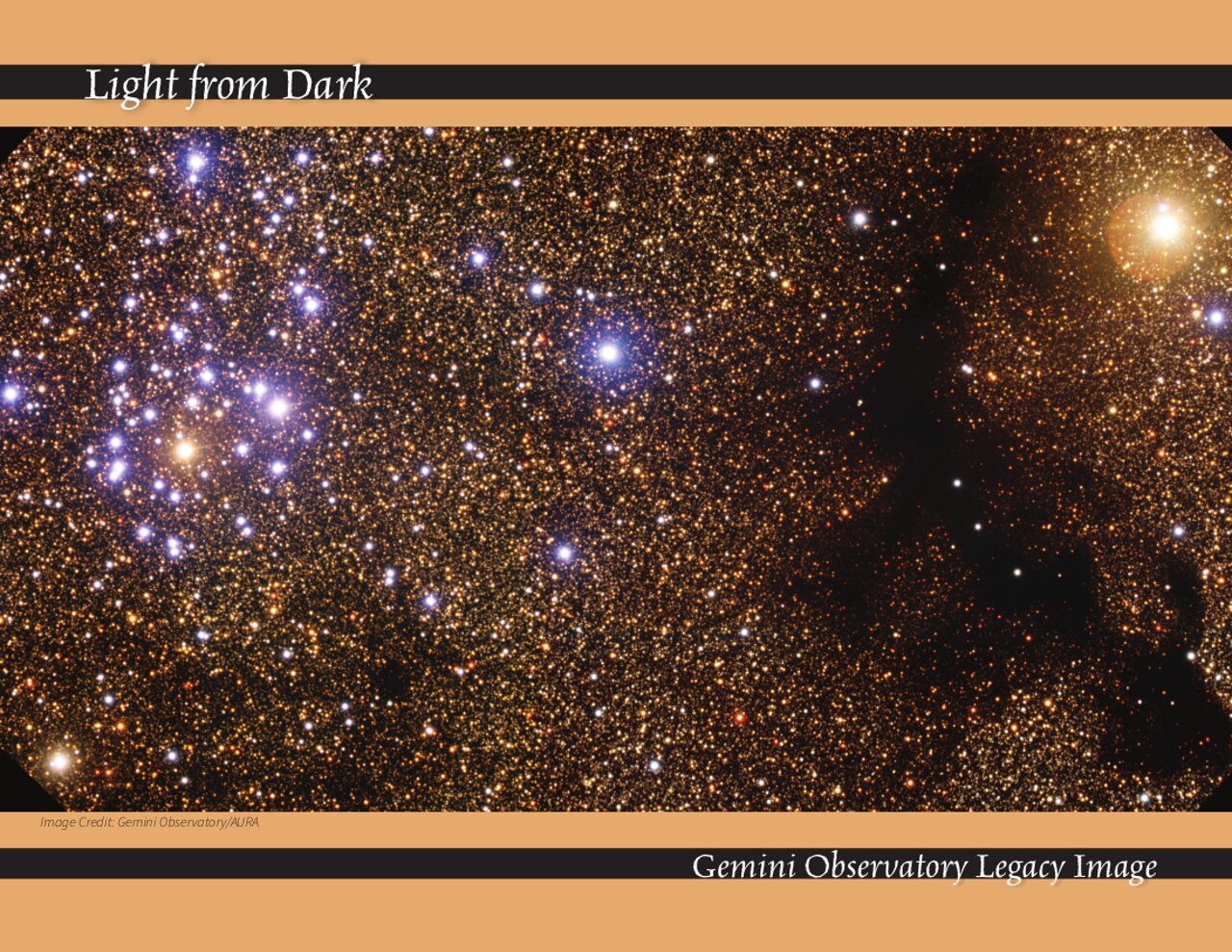Handouts: Light from Dark
Millions of years ago, a dark cloud of dust about 5,500 light years from the Sun coalesced to begin the process of star birth. Today, some 190 million years later, the region is ablaze with hot, massive young stars arrayed in a dandelion-seed-shaped cluster, which we now call NGC 6520. Not far away lies (with a little imagination) the gecko-shaped dark remains of what may be the cluster’s birth cloud, Barnard 86 (B 86).
This image, taken using the Gemini Multi-Object Spectrograph (GMOS) on the Gemini South telescope in Chile, shows only a small section of a larger and highly populated region in the Sagittarius star cloud. It provides the clearest optical view of the cluster and its nearby dark-cloud companion. The close proximity of the two disparate objects in the sky suggests a physical relationship. If so, then the tale of NGC 6520’s birth begins with B 86, most likely the remnant of a once-larger cloud of gas and dust.
B 86 is one of many such dense, dark gas and dust collections in our Galaxy. These nebulae appear dark because they’re so dense they don’t permit much, if any, visible light to pass through. The total mass of the stars in NGC 6520 is roughly equivalent to 300-400 times the mass of the Sun, while the dark cloud contains enough material to make about 3,000 more stars like the Sun.
Créditos:NOIRLab
About the Handout
| Id: | handout026 |
| Release date: | 13 de Julio de 2021 a las 11:28 |
